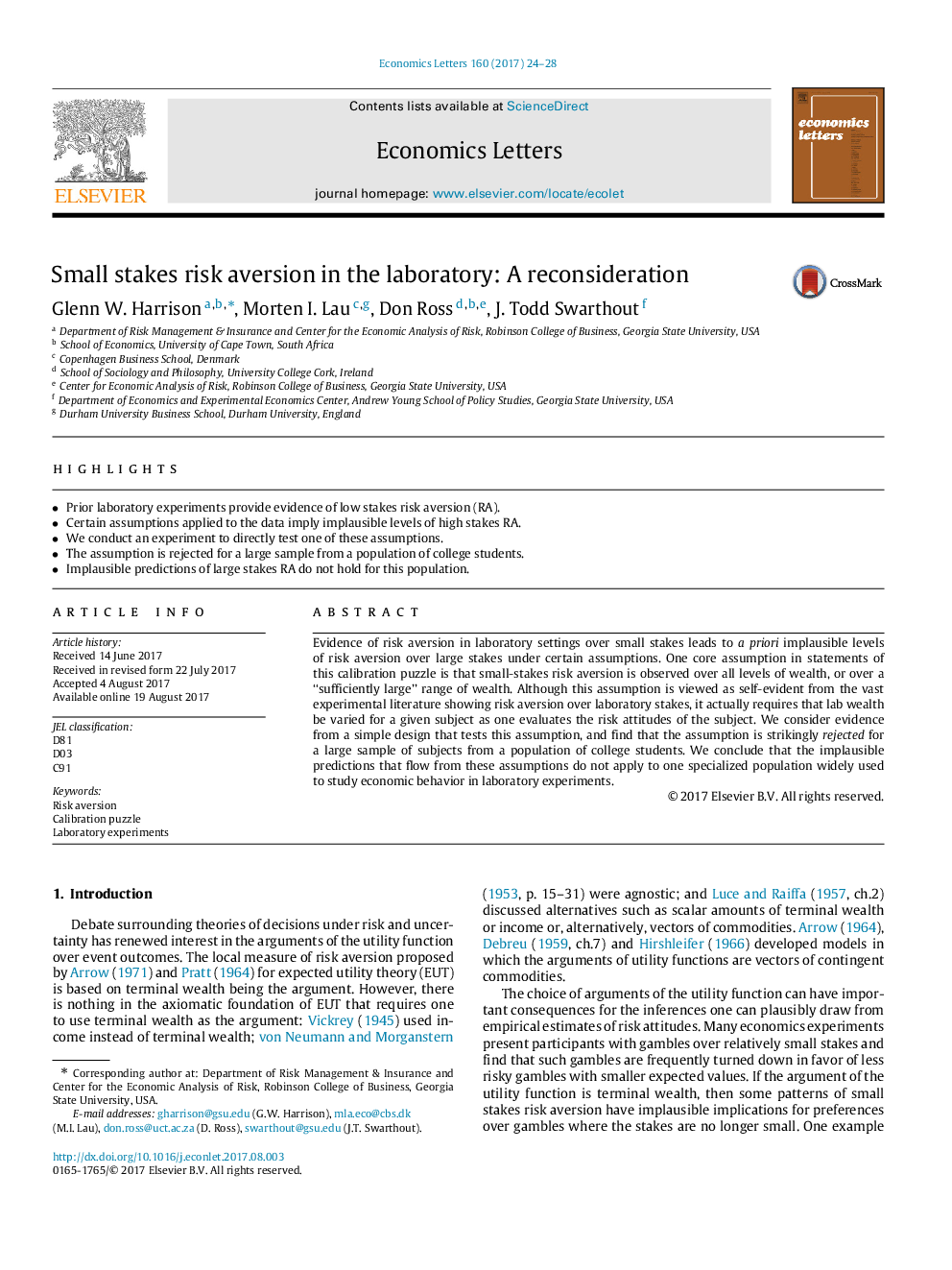| Article ID | Journal | Published Year | Pages | File Type |
|---|---|---|---|---|
| 5057527 | Economics Letters | 2017 | 5 Pages |
â¢Prior laboratory experiments provide evidence of low stakes risk aversion (RA).â¢Certain assumptions applied to the data imply implausible levels of high stakes RA.â¢We conduct an experiment to directly test one of these assumptions.â¢The assumption is rejected for a large sample from a population of college students.â¢Implausible predictions of large stakes RA do not hold for this population.
Evidence of risk aversion in laboratory settings over small stakes leads to a priori implausible levels of risk aversion over large stakes under certain assumptions. One core assumption in statements of this calibration puzzle is that small-stakes risk aversion is observed over all levels of wealth, or over a “sufficiently large” range of wealth. Although this assumption is viewed as self-evident from the vast experimental literature showing risk aversion over laboratory stakes, it actually requires that lab wealth be varied for a given subject as one evaluates the risk attitudes of the subject. We consider evidence from a simple design that tests this assumption, and find that the assumption is strikingly rejected for a large sample of subjects from a population of college students. We conclude that the implausible predictions that flow from these assumptions do not apply to one specialized population widely used to study economic behavior in laboratory experiments.
